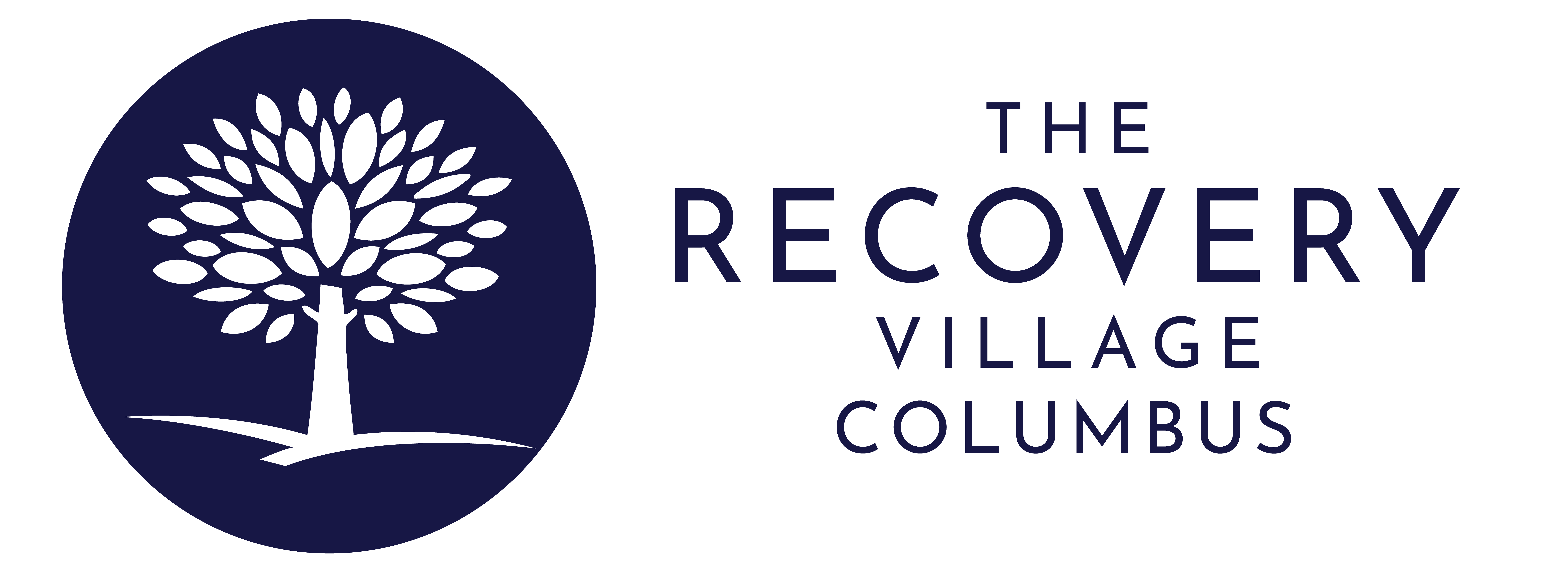Why Is Alcohol Addictive? Physical and Psychological Factors
Written by The Recovery Village Columbus
& Medically Reviewed by Dr. Kevin Wandler, MD
Medically Reviewed
Up to Date
Updated 05/08/2024
Key Takeaways
- Alcohol use disorder (AUD) affects millions of people worldwide, leading to significant morbidity and mortality.
- Genetic, physiological, and psychological factors all play a role in the development of alcohol addiction, making it a complex condition.
- Peer pressure, social norms, and cultural contexts can contribute to excessive alcohol consumption and addiction.
- The addiction cycle typically includes binge/intoxication, negative affect/withdrawal, and preoccupation/anticipation stages, each with its own behaviors and physiological responses.
- The DSM-5 outlines specific criteria for diagnosing AUD, helping healthcare providers identify and classify the disorder’s severity.
- Treatment for AUD often involves a combination of medical and psychological interventions, including medication-assisted treatment, counseling, and support groups like Alcoholics Anonymous.
The prevalence of alcohol addiction is significant, illustrating its powerful grip on individuals across various demographics. According to the National Institute on Alcohol Abuse and Alcoholism, approximately 28.8 million people aged 18 and older had alcohol use disorder (AUD) in the United States in 2021. Furthermore, the World Health Organization reports that alcohol contributes to over 3 million deaths globally each year. Understanding why the substance is so addictive can help individuals and their loved ones seek effective prevention and treatment strategies.
How the Body Becomes Dependent on Alcohol
Alcoholism, also known as alcohol use disorder (AUD), is a complex condition influenced by a variety of genetic and biological factors.
Physical Factors
Physical factors play a significant role in contributing to alcohol addiction and dependence. Genetics is one of the major contributors, as certain genetic profiles can predispose individuals to alcoholism. For example, variations in genes that affect the metabolism of alcohol can influence how an individual reacts to alcohol, potentially making it more pleasurable or less discomforting, thereby increasing the risk of habitual use. Additionally, the brain’s reward system can adapt to repeated alcohol exposure, leading to changes in neurotransmitter activity and brain function that reinforce the behavior and make cessation challenging.
Moreover, physiological factors such as the body’s tolerance to alcohol also contribute to dependence. Over time, regular consumption leads to increased tolerance, requiring more alcohol to achieve the same effects. This escalation can accelerate the shift from voluntary to compulsive drinking. Chronic alcohol use can also disrupt the balance of various neurotransmitters, particularly those associated with the brain’s reward and stress systems, making the individual’s ability to abstain even more difficult and promoting a dependence on alcohol to maintain normalcy. These physical alterations are fundamental in the progression from regular alcohol use to addiction and dependence.
Psychological Factors
AUD frequently co-occurs with other mental health disorders. This comorbidity underscores the intricate relationship between psychological well-being and alcohol dependency. Disorders such as anxiety, depression, and stress can precede or result from AUD, creating a cyclically detrimental impact on an individual’s mental health.
The presence of common mental disorders like depression and anxiety poses significant risk factors for developing AUD. The psychological landscape of an individual, including their family history of alcohol problems, propensity for anxiety or depression, impulsivity, and risk-taking behaviors, can all elevate the likelihood of AUD manifestation.
Looking for addiction treatment in Columbus, Ohio or the surrounding areas? We have inpatient and outpatient facilities nearby and across the country ready to help.
Social and Environmental Influences on Alcoholism
Excessive alcohol consumption or alcoholism can be caused by a combination of various social and environmental factors, one of which is peer pressure. Studies show that peer influence is a significant risk factor for teenage substance use, as it links the drinking habits of peers with those of adolescents. When under peer pressure, teenagers may consume alcohol excessively, which can harm their health and overall well-being. This risk is particularly high during adolescence, as young people are more susceptible to such influences at this stage.
Social norms and cultural contexts also have a significant impact on alcohol use. Different factors, such as discrimination, the number of liquor stores in certain communities, and how socially acceptable drinking is, can all contribute to varying levels of alcohol consumption among different groups of people. For younger immigrants, joining social networks that promote alcohol use and possibly not having parental support can increase the risk of alcohol misuse.
The Stages of Alcohol Addiction
The alcohol addiction cycle is typically described in three stages, each corresponding to different behaviors and physiological responses involved in the progression of addiction. Understanding these stages helps in recognizing the signs and mechanisms of alcohol addiction, which is crucial for effective treatment and prevention.
Binge/Intoxication Stage
In the binge/intoxication stage, individuals consume large amounts of alcohol in a short period. This stage is characterized by the overwhelming desire to experience the pleasurable effects of alcohol, driven by its impact on the brain’s reward system. The reward system releases dopamine during alcohol consumption, reinforcing behaviors that promote drinking to recreate these pleasurable effects.
Negative Affect/Withdrawal Stage
As the effects of the binge wear off, the individual enters the negative affect/withdrawal stage. This stage is marked by an increase in negative emotions and physical symptoms of withdrawal, such as anxiety, irritability, nausea, and even depression. These symptoms are a result of the brain chemistry attempting to rebalance itself after alcohol use, but the discomfort often drives the individual to consume more alcohol to alleviate these symptoms, creating a vicious cycle.
Preoccupation/Anticipation Stage
The final stage of the cycle, the preoccupation/anticipation stage, involves constant cravings and obsessive thinking about alcohol. During periods of sobriety, the individual may struggle with significant cravings and thoughts of drinking, driven by changes in the brain’s stress circuits and reduced function of the reward system. This stage keeps the cycle of addiction active as the individual seeks to relieve the preoccupation through further alcohol use, starting the cycle anew.
When Does Alcohol Addiction Become a Problem?
The Diagnostic and Statistical Manual of Mental Disorders, Fifth Edition (DSM-5), outlines specific criteria for the diagnosis of alcohol use disorder (AUD). Health professionals use these criteria to determine the presence and severity of AUD in individuals. According to the DSM-5, a diagnosis of AUD is based on a pattern of alcohol use leading to significant impairment or distress, as indicated by at least two of the following symptoms occurring within a 12-month period:
- Alcohol is consumed in larger amounts or over a longer period than intended.
- There is a persistent desire or unsuccessful efforts to cut down or control alcohol use.
- A great deal of time is spent in activities necessary to obtain alcohol, use alcohol, or recover from its effects.
- Craving, or a strong desire or urge to use alcohol.
- Recurrent alcohol use resulting in a failure to fulfill major role obligations at work, school, or home.
- Continued alcohol use despite having persistent or recurrent social or interpersonal problems worsened by the effects of alcohol.
- Important social, occupational, or recreational activities are given up or reduced because of alcohol use.
- Recurrent alcohol use in situations in which it is physically hazardous.
- Alcohol use is continued despite knowledge of having a persistent or recurrent physical or psychological issue that is likely to have been worsened by alcohol.
- Tolerance, as defined by either a need for markedly increased amounts of alcohol to achieve intoxication or desired effect or a markedly diminished effect with continued use of the same amount of alcohol.
- Withdrawal, as manifested by either the characteristic withdrawal syndrome for alcohol or alcohol (or a closely related substance), is taken to relieve or avoid withdrawal symptoms.
The severity of AUD is classified as mild (2-3 symptoms), moderate (4-5 symptoms), or severe (6 or more symptoms). This systematic approach to diagnosis enables healthcare providers to accurately identify the disorder and tailor treatment plans to the individual’s needs. The reliability of self-reported symptoms has been supported by research, indicating that self-assessment tools can effectively identify AUD when used as part of routine care.
If you are struggling with alcohol addiction, we are here for you.
Approaches to Alcoholism Treatment and Recovery
The journey to recovery from alcoholism is multifaceted, encompassing a variety of treatment options tailored to individual needs. Treatment for AUD may include a combination of medical and psychological strategies designed to help patients regain control over their drinking habits and resume healthy, productive lives. Residential treatment programs often involve an interdisciplinary team of health professionals, including addiction counselors, social workers, doctors, and nurses, who provide comprehensive care.
Medication-Assisted Treatment (MAT)
Medical treatments for alcoholism encompass a range of interventions aimed at addressing both the physical dependence and psychological aspects of the disease. Recent advancements and policy changes have expanded the accessibility and variety of treatments available for individuals struggling with alcohol use disorder (AUD). For instance, buprenorphine, a medication that mitigates withdrawal symptoms and reduces cravings, is now reaching an average of 37,000 new patients monthly.
Counseling in Alcoholism Treatment
Counseling is critical in addressing the psychological aspects of alcohol addiction, providing individuals with strategies for coping, recovery, and relapse prevention. Psychotherapy for alcoholism often utilizes evidence-based modalities such as cognitive behavioral therapy (CBT) and dialectical behavior therapy (DBT).
Motivational interviewing (MI) is another effective approach, enhancing an individual’s motivation toward recovery and fostering engagement with treatment. Family therapy, often part of a comprehensive treatment plan, addresses not only the individual’s addiction but also its impact on familial relationships, targeting areas like communication and behavioral patterns within the family unit.
Support Groups and Community Resources
The journey to recovery from alcoholism is often a collaborative effort, with support groups and community resources playing a critical role.
Alcoholics Anonymous (AA) is one of the most well-known support groups, offering a 12-step program that has become a cornerstone of many people’s recovery journeys. Participants are paired with sponsors who guide them through the steps, offering personal support and accountability. For those seeking alternatives to AA, there are other support groups like SMART Recovery, which is recognized for its evidence-based approach to addiction recovery.
When choosing a support group or community resource, it’s important to consider the specific needs of the individual. Whether it’s the traditional approach of AA, the science-based methods of SMART Recovery, or the convenience of online forums, a wealth of options are available to support the path to sobriety and overall well-being.
Alcoholism Is a Disease — Seek Treatment Today
Getting help for alcoholism at The Recovery Village Columbus can greatly improve the chances of overcoming alcohol addiction. The center’s team of professionals works closely with each patient to create and continuously adjust treatment plans that ensure long-term success.
The Recovery Village Columbus offers several treatment options, including medical detox, inpatient rehab, and more to provide you with personalized care at our Joint Commission-accredited facility. Contact a Recovery Advocate today to take the first step toward living an alcohol-free life.
Authorship


